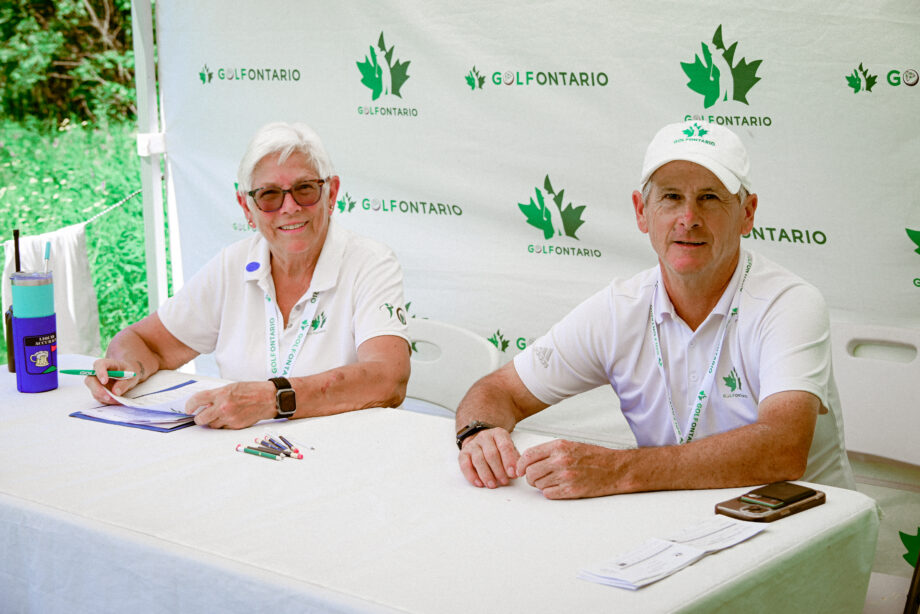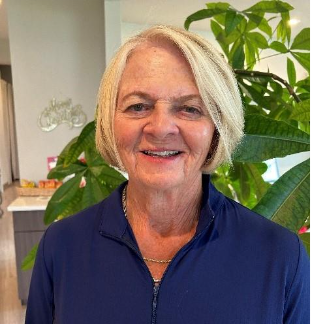Team Ontario 2026: Emerging Talent Ready to Rise

Golf Ontario is proud to unveil the 2026 Team Ontario roster—a group blending seasoned competitors with emerging talents ready to break through.
Selected from junior golfers across the province, these U19 athletes earned their spots through exceptional play, dedication, and resilience on and off the course.
A Strong Core, a Bold New Class
This year’s team features a proven core of returning athletes, joined by a dynamic group of first-time team members who turned heads throughout the 2025 season. Together, they form a roster built for long-term success—and ready to make an immediate impact.
Head Coach and PGA of Canada Professional Reggie Millage, now entering his 13th year leading Team Ontario, will once again guide the program.
“There’s a real sense of excitement around this group. With so many new team members, they’ve already shown they’re hardworking and highly competitive,” says Millage. “I can tell these athletes are determined to prove themselves on the biggest stage.”
Meet the 2026 Team Ontario Athletes
Girls
Alexis Card (2028) – Galt CC — 2025 Ontario U15 Girl’s Champion
Andrea Lai (2029) – St. Thomas G&CC — 2025 Ontario Junior Girls Match Play Finalist
Amelia McFarlane (2027) – Ottawa Hunt — 2025 Ontario U17 Girl’s Champion
Cindy Yan (2027) – Station Creek — 3rd at 2025 Ontario Junior Girl’s Spring Classic
Evelyn Ma (2028) – Station Creek — 2025 Canada Summer Games Individual Bronze Medalist
Kaprice Park (2028) – RattleSnake Point — T2 2025 Ontario Junior Super Camp Invitational
Kaylan Green (2028) – Scarboro G&CC — 5th on the 2025 Junior Golf Pathway Rankings
Serena Zhang (2027) – Players Club – Toronto South — 2025 Ontario Junior Girls Amateur Champion
Boys
Andy Dai (2027) – Players Club – Toronto North — 3rd 2025 Ontario Junior Boys Amateur
Dimitri Protopapas (2026) – The Nest — 2025 Ontario Junior Boy’s Match Play Champion
Evan Hall (2027) – Elmira GC — T2 2025 Canadian Junior Amateur Championship (Juvenile)
Joseph Totino (2028) – Summit G&CC — T2 2025 Canadian Junior Amateur Championship (Juvenile)
Manav Bharani (2027) – Brampton GC — 2nd at the 2025 Ontario Junior Super Camp Invitational
Matthew Simpson (2026) – Lambton G&CC — Qualified for 2025 USGA Junior Amateur
Max Li (2028) – Summit G&CC — T3 2025 Ontario U17 Boy’s Championship
Michael Vivone (2026) – Royal Ottawa — 2025 Ontario U17 Boy’s Champion
Athlete Development at the Highest Level
Team Ontario is designed to shape complete athletes—technically, physically, mentally, and personally.
Athletes receive training and support in:
• Performance coaching
• Strength & conditioning
• Sports psychology
• Nutrition
• Tactical decision-making
• Time and energy management
• Tournament preparation and recovery
They are guided by an elite performance team, including:
• Dr. Charles Fitzsimmons — Mental Performance
• Dr. Nick Martichenko — Physical Performance
2026 Training Roadmap
• Kick Off Camp – Burloak Indoor Golf
• Bishops Gate Training Camps – Orlando, FL
• Humber Golf Lab – Applied technical and data-driven sessions
• March Break Training Camp – Myrtle Beach, SC
• Ontario Junior Players Invitational
• Can-Am Matches
•Spring Training Camp – Niagara Falls
• Summer Team Daysintegrated into player tournament schedules
Golf Ontario congratulates each of these athletes and looks forward to an exciting 2026 season ahead.
For more information about the Team Ontario program and athletic development in the province, CLICK HERE.
The Team Ontario journey is fueled by partners who believe in developing the next generation of champions. TaylorMade Golf Canada and adidas Golf Canada play a pivotal role in making this program possible through their generous and ongoing support.
Small Gifts. Big Impact.

This Giving Tuesday, Golf Ontario is calling on our community to help open the doors of golf to more young people across the province. Our mission is simple: expand youth access to affordable rounds — and it all starts with a gift as small as $10.
Small Gifts. Big Impact.
Every $10 donated directly supports subsidies that help local golf facilities lower the cost of green fees for young players.
These small contributions add up to something powerful:
A young athlete stepping onto the tee for the first time
A chance to build confidence, resilience, and connection
A lifelong love for the game sparked by one accessible round
Your $10 becomes their opportunity.
DONATE NOW — YOUR $10 MAKES A BIG IMPACT
How It Works
Golf Ontario provides subsidies directly to participating facilities, helping them offer more affordable youth golf opportunities across Ontario.
On Giving Tuesday only: every $10 donation is matched 2X, tripling your impact.
For the rest of December: every donation receives a 1X match to keep the momentum going.
Our goal is to fund hundreds of youth rounds — one small donation at a time — and create more affordable, welcoming points of entry for young golfers.
Aligned With Our Commitment to Youth Access
This campaign supports Golf Ontario’s broader commitment to growing participation and increasing youth access throughout the province. While Golf Ontario collaborates with national youth-access initiatives, this fundraising effort directly supports Ontario facilities through locally delivered subsidies.
To learn more about youth access programs in Ontario, CLICK HERE.
Join Us
This Giving Tuesday, help us grow the game and inspire the next generation of golfers. Together, we can make golf more accessible, more affordable, and more welcoming for youth across Ontario.
Golf Ontario Backs National Off-Course Golf Strategy to Grow the Game Year-Round

In collaboration with Golf Canada’s newly launched national Off-Course Strategy and Just Swing campaign, Golf Ontario is proud to support and engage with the growing off-course golf market across Ontario.
“Off-course golf is expanding how and where people connect with the sport,” said Kyle McFarlane, Golf Ontario CEO. “All golf is golf. Whether it’s played indoors or outdoors, on a simulator or at a course, it all connects people to the game we love. Through the Just Swing campaign, and in partnership with Golf Canada, we’re committed to supporting facilities and golfers year-round. Golf in Ontario is a 365-day sport, and together we’re ensuring there are more ways than ever for people to play, belong, and stay engaged.”
As part of this strategy, Golf Ontario and Golf Canada are introducing a new Facility Membership Program designed specifically for off-course operators. This initiative allows simulators, indoor centres and golf entertainment venues to become official member facilities of Golf Ontario and Golf Canada—connecting their businesses with the province’s largest and most engaged golf community. The program provides facility owners with new ways to grow participation, strengthen engagement, and access valuable year-round member benefits.
The response from Ontario’s indoor golf community has been overwhelmingly positive.
“As an indoor golf facility owner and operator, I’ve seen firsthand how the indoor golf experience has evolved to become an integral part of the game and how people experience it year-round,”said Sean Casey, PGA of Canada Professional and Owner of Burloak Indoor Golf. “It’s great to see Golf Ontario and Golf Canada recognizing the important role we play and taking steps to include and support indoor facilities through this new class of membership. I fully welcome their support and the opportunity to work together to continue improving and growing the indoor golf experience.”
The Just Swing campaign is the public-facing platform behind the strategy, inspiring golfers to discover golf anytime, anywhere. By showcasing the fun, social, and accessible side of golf—whether that’s on a simulator, at a driving range, in a short game area, or even through golf gaming—Just Swing challenges perceptions of when and where golf can be played. The campaign celebrates that every swing counts, no matter the setting, and highlights how off-course golf is helping introduce new and diverse audiences to the sport.
A new digital program will soon connect golfers directly with off-course facilities across the country. Through the Golf Canada App and website, golfers will be able to discover Official Member Facilities and even log their off-course activity—creating a seamless experience that bridges indoor and outdoor play and keeps golfers connected to the game all year long.
For more information on Golf Ontario’s year-round initiatives and partnerships supporting Golf For All, visit GolfOntario.ca.
Join Our Volunteer Team: Help Shape the Future of Golf in Ontario

Are you looking for a meaningful way to give back to the game you love?
Golf Ontario is now recruiting passionate volunteers for the 2026 season to help us deliver world-class championships and live our mission of ‘Shaping Lives by Connecting People to Positive Golf Experiences.’
Whether you can lend a few hours each month or take on a more regular commitment, your time and enthusiasm make a real difference. Our volunteers are the backbone of more than 100 qualifiers and championships each year, helping ensure that every event runs smoothly and professionally.
Volunteer Roles
Tournament Officials
Tournament Officials assist in administering Golf Ontario Qualifiers and Championships throughout the season. These volunteers play key roles in registration, starting, scoring and monitoring pace of play.
Each tournament is supported by Certified Referees, but Tournament Officials are essential for event execution and player experience.
Assignments typically begin in late March, with efforts made to match volunteers to nearby events to minimize travel. New officials are often paired with experienced volunteers for training and mentorship.
Referees
Certified Referees play a critical role at Golf Ontario Provincial Qualifiers and Championships, as well as at events run by partner organizations such as the PGA of Ontario, Ontario Colleges, and Ontario Universities.
To serve as a Referee, volunteers must have successfully completed at least Level 2 of Golf Canada’s Rules of Golf Education Program and demonstrate a strong understanding of the Rules of Golf.
Referees work closely with fellow officials to apply the rules consistently, make confident decisions under pressure, and ensure fair play across all events.
If you’re interested in becoming a Referee but haven’t yet completed the required training, you can start by applying as a Tournament Volunteer. Active Golf Ontario volunteers are eligible for rules education subsidies to support their certification journey.
From Our Volunteers
“As a volunteer with Golf Ontario, I feel that I am part of a professional organization dedicated to growing the game of golf. Golf Ontario has provided the resources, training, and support necessary to keep us engaged and feeling valued. I love the game, and volunteering with Golf Ontario is an extension of that passion.”
— Theresa, Kralovensky Golf Ontario Volunteer
How to Get Involved
We’re currently welcoming applications from across Ontario, with particular need in the Niagara, London, Waterloo and Simcoe regions.
Application deadline: December 19, 2025
Learn more and apply: www.golfontario.ca/volunteering
Questions? Contact our Volunteer Coordinator at volunteer@golfontario.ca
Fall Course Conditions: What Every Golfer Should Know

Fall is a great time for golf – it’s also a season of transition that brings changes to course maintenance and playing conditions.
Check out this video from our friends at the USGA on what to expect on the golf course this autumn.
Celebrating the 2025 Volunteer Award Recipients

At Golf Ontario, our volunteers are the heart of everything we do. Their dedication, time, and passion fuel the success of our programs, events, and the vibrant golf community we continue to grow across the province. Each fall, we come together to celebrate these incredible individuals at our annual Volunteer Appreciation Days. During these celebrations, we honour milestone years of service and proudly present two of our highest volunteer accolades: the Volunteer of the Year Award and the Dick Grimm Distinguished Service Award.
Dick Grimm Distinguished Service Award

Sharon has volunteered with Golf Ontario since 2008. For over 15 years she has been a tremendous asset to the course rating team. She currently acts as the team leader for the Peterborough region and does so with infectious energy. She’s always on time for ratings, keeps the process running smoothly, and makes sure everyone is on the same page with her communication skills. Known for being detail oriented (a tremendous asset in the CR process) Sharon also finds time to play Oliver’s Nest Golf Course (her home club) and flirts with being a single-digit handicap!
Sharon’s dedication and positive attitude make her a pleasure to work with, and her commitment to Golf Ontario and the course rating program is exemplary. When she does retire from the course rating team lead, we are certain Sharon will continue to share her genuine love for golf with others and will be a lifelong ambassador for the game.
Sharon goes above and beyond; embodying the spirit, passion and dedication of the sport, which makes her an obvious choice for the Golf Ontario Dick Grimm Distinguished Service Award. Thank you Sharon!
Volunteer of the Year Award

Since joining Golf Ontario as a volunteer in 2018, Judy Pouliot has distinguished herself as an exceptional leader and ambassador for the game. A nationally certified Level 3 referee, Judy has not only mastered the Rules of Golf but has also dedicated herself to educating and mentoring others.
Her leadership in delivering “Rules Ready” programming at clubs throughout the Kingston area has introduced countless golfers to the fundamentals of the game, while her instruction in the Level 2 Rules program has inspired many to pursue advanced certification. Judy’s impact extends well beyond education—her presence as a referee has been instrumental in the growth and success of Golf Ontario championships, in addition to her contributions at Golf Canada and GTA AM Tour events.
Judy is known for her professionalism, fairness, and warmth on the course. She fosters an inclusive and welcoming environment for athletes and volunteers alike, handling every ruling with integrity, kindness, and respect. Her passion for golf and unwavering commitment to the sport exemplify the very best of volunteerism. Judy Pouliot’s contributions have left a lasting mark on our championships and community, making her a truly deserving honoree.

As a Course Rater since 2018, Darrell Peters has been a fabulous support and model of volunteerism for Golf Ontario. In 2025 Darrell exhibited the Golf Ontario value of Brilliance via his commitment to continuous improvement, innovation and creativity in his work. Specifically, Darrell developed an AF1 tool (Automated Excel based form with programmed upload on data to the USGA CRS) which saves countless hours for our teams and has helped simplify rating process.
Darrell is also appreciated for his efforts with course rating in more than one region. All this while finding time to volunteer on the RINK hole at the Canadian Open, and carrying a single digit Handicap Index at his club: Markland Wood Golf Club. Thank you, Darrell, for embracing Golf Ontario’s mandate of Shaping Live by Connecting People to Positive Golf Experiences.
At the heart of Golf Ontario, our volunteers are the lifeblood in a variety of critical areas, including championships, rules, course rating, and governance on committees and our board of directors. They are the sport’s ambassadors and an essential part of our team, enabling us to deliver exceptional programming and experiences to golfers, partners, and industry stakeholders.
Interested in becoming part of the Golf Ontario volunteer family? Find out more about the opportunities and rewards on our Volunteering Resource page HERE.
Ontario Men’s Four-Ball Heads to Oakdale

Oakdale Golf and Country Club is set to host the Ontario Men’s Four-Ball Championship on October 6th. This prestigious, one-day competition will see 56 two-man teams battle for the championship title in four-ball format.
Established in 1959, the Ontario Men’s Four-Ball Championship has a long history at Oakdale Golf and Country Club—also the site of the 2023 RBC Canadian Open, where Canadian Nick Taylor secured a historic victory. The event has been held here every year since its inception, with the exception of 1963 and 1965.
QUOTE
“We are deeply honoured to have our final Golf Ontario provincial championship of the year hosted at the prestigious Oakdale Golf and Country Club. The club has been an incredible supporter of this championship for more than 60 years, and we’re excited to be on-site this Monday for another exceptional Ontario Men’s Four-Ball Championship.”
–Rob Watson, Tournament Director.
TEAMS TO WATCH
Last year’s winners, the father and son duo of Charlie and Cam Burke.
Daniel DiFrancesco and Traynor Turkiewicz, 2023 winners.
2022 champions, Ryan Kings and Josh Hunke.
National and provincial champion, Charles Fitzsimmons and Canadian radio icon Howard Glassman.
Legends Dave Bunker and Rob Cowan earned an exemption by winning the 2024 Ontario Men’s Senior Four Ball Championship and are competing together at Oakdale.
FAST FACTS
Venue: Oakdale Golf and Country Club
Date: Oct. 6
Field: 56 two-man teams
Format: 18-hole, four-ball
Pairings: HERE
Fun Fact: Past champions include Ontario Golf Hall of Fame members Mike Weir, Gary Cowan, Warren Sye, Kelly Roberts, Bill Morland and Phil Farley.
Limited Release: Dormie Workshop Custom Headcover

This isn’t just a headcover.
It’s a personalized Ontario license plate for your golf bag—a bold statement handcrafted just for you.
The Ontario Personalized Plate by Dormie Workshop combines top-tier Canadian leather craftsmanship with the nostalgic design of the province’s iconic plate. Featuring your custom lettering, the Yours to Discover slogan, and a green 2025 badge, this cover is more than protection for your driver—it’s your identity on the tee.
Only 100 will be made. Only Golf Ontario members can get one.
Each Ontario Personalized Plate is:
- Handcrafted by Dormie Workshop in Halifax, Nova Scotia
- Made with premium Italian full grain leather
- Personalized with up to 8 bold blue characters
- Embellished with Ontario’s “Yours To Discover” slogan
- Marked with the official 2025 green badge
- Lined with soft fabric to protect your driver


Orders ship in 4–6 weeks. Dormie Workshop will review all text—offensive language will not be produced.
Customize Yours Now
The Comeback: Dawson Lew’s Standout Season

Team Ontario’s Dawson Lew has quickly made a name for himself as one of the province’s rising stars in golf. Dawson has built an impressive resume at a young age, highlighted by his ability to bounce back from adversity and deliver such a standout season.
Last summer, Dawson faced a major setback when he broke his leg in late August. The road to recovery tested his patience and determination, taking nearly four months before he could return to playing, and even longer before he felt competitive again. “It was pretty tough,” Dawson shared. “I just focused on what was ahead of me, first the recovery, then practice, and then just getting better each day.” His resilience paid off, leading to one of the best seasons of his career.
Among his many successes this year, one achievement stands out above the rest: winning the Canadian Junior Championship. “That was probably the biggest one of my career so far. Obviously, it gets me into the U.S. Junior Championship next year, which is nice.” “ It was a pretty big honour to be able to win that one and then etch my name on that trophy next to a couple pretty cool names in golf.”
As a proud member of Team Ontario, Dawson remains focused on continuous improvement and has many long-term goals in golf. He explained. “For me, it’s about the process, getting faster, gaining speed, and working at it every day.” With long-term aspirations of playing college golf and eventually competing on tour, Dawson is committed to the hard work it will take to get there. “Right now, I’m just focused on what I need to do at this moment and in the next couple of months.”
From injury recovery to winning a national title, Dawson Lew has shown resilience, dedication, and the mindset of a champion. His journey proves what perseverance can achieve, and Golf Ontario is proud to support him as he continues chasing his goals in golf.
Golf Ontario Announces 2025 Scholarship Recipients

For more than three decades, the Golf Ontario Scholarship Program has championed the dreams of student golfers across the province. What began in 1994 as a commitment to easing the financial pressures of post-secondary education has grown into a tradition of celebrating well-rounded student-athletes who excel in both academics and athletics. The program has created opportunities for hundreds of student golfers, thanks to the generosity of corporate partners and sponsors who share a commitment to advancing both education and the game of golf.
Through the generosity of its donors, Golf Ontario proudly awards scholarships named in honour of remarkable Ontarians: Ken McKenzie, Christine Fisher, Craig Revell, Helena Harbridge, Dave Mills, and Bill Bath, whose legacies continue to inspire the next generation of golfers. Supported by partners like Baka Communications, a steadfast advocate for amateur golf in Ontario, these scholarships recognize student-athletes who excel in academics, demonstrate a passion for the game, and pursue their goals with dedication and excellence. Each scholarship tells a story of commitment, passion, and the enduring impact of those who helped shape golf in Ontario.
Congratulations to all the 2025 scholarship recipients!
Full List of 2025 Scholarship Award Recipients:
- Jadelina Tep-Chhun – St.Thomas Golf & Country Club / Christine Fisher Memorial Scholarship
- University of Waterloo, Kinesiology
- Russel Aide – Black Bear Ridge Golf Course / Helena Harbridge Memorial Scholarship
- University of Arizona, Engineering
- Ben Sheridan – Ottawa Hunt & Golf Club / Ken McKenzie Scholarship
- Robert Morris University, Finance
- Wendy Li – Summit Golf & Country Club / Craig Revell Scholarship
- Boston University, Health Science
- Jaiden Brown – Dalewood Golf Club / Bill Bath Scholarship
- Eckerd College, Economics
- Female: Emma Hansen – Blue Springs Golf Club / Dave Mills Scholarship
- Elon University, Strategic Communications
- Male: Bennett Brazier – Beach Grove Golf & Country Club / Dave Mills Scholarship
- Monmouth University, Business Administration
- Eric Wen – Whistle Bear Golf Club / Golf Ontario Support Scholarship
- Fairleigh Dickinson University, Electrical Engineering
- Female: Avery Nordman – Canadian Golf & Country Club / BAKA Golf Ontario Scholarship
- Longwood University, Kinesiology
- Male: Liam Rice – Picton Golf & Country Club / BAKA Golf Ontario Scholarship
- Loyalist College, Pre-Service Firefighting Education & Training
About Golf Ontario Scholarship Program
To be eligible for one of the Golf Ontario awards or scholarships, recipients must have maintained at least a 75% academic average, enrolled in a post-secondary institution, be members of Golf Ontario, and are actively involved in golf. If you are interested in applying for next year’s batch of scholarships, please visit here to learn more about the process and benefits of Golf Ontario Scholarships.
Wishing our 2025 scholarship winners the very best as they pursue their education and continue making an impact in the world of golf!


